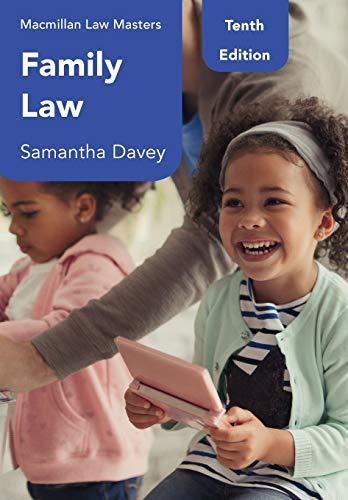Question
Below are the questions, kindly solve Question 6: Which statement best describes a 'meeting of minds'? (2 marks) A. Where the parties agree on most
Below are the questions, kindly solve
Question 6: Which statement best describes a 'meeting of minds'? (2 marks)
A. Where the parties agree on most of the essential terms of a contract.
B. Where there has been a valid acceptance of an offer; i.e. an agreement.
C. This is generally a stage in the negotiations, where the parties agree on the conclusions that should be reached.
D. This is stage before the contract is put formally in writing and signed by the parties.
Question 7: In Beswick v. Beswick (1967) the court held that since Mrs Beswick was not part of the contract made between her late husband and nephew, she had no rights under that contract. If the case was decided today, which statute would likely reverse the outcome of Beswick's case? (2 marks)
A. The Women's Charter.
B. The Agreement of Third Parties Act.
C. The Contracts (Rights of Third Parties) Act.
D. The Unfair Contracts Terms Act.
Question 8: Once a contract is reduced in writing, evidence cannot be introduced to contradict, vary, add to or subtract from the written agreement. What is this known as? (2 marks)
A. The Golden Rule, as suggested in the interpretation of contracts.
B. The Rule in Pinnel's Case, as interpreted in Beswick v. Beswick (1967).
C. The Parol Evidence Rule, as codified in the Evidence Act.
D. The Rule of Law.
Question 9: In Olley v Marlborough Court Ltd (1949), what led the court to decide that the exclusion clause found in the hotel room was not binding on the couple who checked into the hotel? (2 marks)
A. The court held that the exclusion clause was not binding on the couple because it was introduced after the contract had been made at the reception; the couple only became aware of the term when they went up to their room.
B. The court held that the exclusion clause was not binding on the couple because it was considered to be a ludicrous term.
C. The court held that the exclusion clause was not binding on the couple because it would be against public policy that a hotel could escape liability for a breach of contract on its part.
D. The court was of the opinion that the hotel, having insurance, would be in a position to reimburse the couple for the valuables lost. 5
Question 10: In the absence of any employer's legitimate interest to protect, which vitiating factor would render a contractual term restraining an employee from working for a competitor after he/she leaves his current employment unenforceable? (2 marks)
A. Public policy.
B. Illegality.
C. Misrepresentation.
D. Unconscionability???? Misrepresentation.
D. Unconscionability




Step by Step Solution
There are 3 Steps involved in it
Step: 1

Get Instant Access to Expert-Tailored Solutions
See step-by-step solutions with expert insights and AI powered tools for academic success
Step: 2

Step: 3

Ace Your Homework with AI
Get the answers you need in no time with our AI-driven, step-by-step assistance
Get Started


